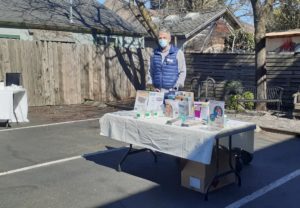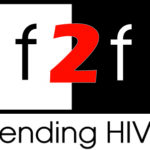As HIV advocates, we’ve long known how crucial harm reduction is to our mission. Through a harm reduction approach, we can affirm the rights, health and dignity of people who use drugs and their loved ones, and together, end the HIV and overdose epidemics. AIDS United’s harm reduction grants and initiatives support evidence-based and community-driven approaches to reduce the health, psychosocial and socioeconomic disparities experienced by people who use drugs.
We’re launching a new blog series to highlight the incredible work of our harm reduction grantee partners in community who do this work every single day. To start us off, we spoke to Lorie Violette, the prevention director of Face to Face Sonoma County AIDS Network.

Face to Face provides “a judgement-free environment, laced with love and compassion,” said Violette. “We acknowledge that people are generally doing the best they can. We don’t ignore the issues that one may be facing or causing harm.”
Check out our conversation.
What got you involved in harm reduction? How did your organization get founded?
I began as a volunteer at a local syringe services program in 2000. I feel in love with all the principles of harm reduction, and I knew this was my life’s work. I was able to build meaningful relationships with such a stigmatized community of humans.
Our agency was founded almost 40 years ago, as a response to people dying alone. Face to Face wanted to have a loving, safe place for people to live in and be cared for. We’ve continued to grow and evolve over the years to meet the needs of our community, including adding our SSP in 2014.
What specific populations do you work with at your SSP? How do you tailor your programming to these populations and their needs?
The populations we work with include people experiencing homelessness, people living with HIV, LGBTQI folks, Latinx people, BIPOC people, folks with mental illness, as well as various other populations. Our goal has been to create the space and resources that our participants want and need. Programs must be adaptable, constant and consistent. We strongly believe that addressing stigma is essential and that the saturation of naloxone will save lives.
We have seen the ways in which SSPs and community-based harm reduction programs have adapted services in response to the ongoing COVID-19 pandemic. Could you speak to some of the innovative programming you’ve done?
Day one of SIP we went mobile with our program. This included purchasing a cell phone designated to harm reduction and driving all over our rural county to meet people. This meant we also connected with people we hadn’t seen before, who weren’t able to come to us. We updated our messaging at our facility on our phone system and website to let people know what was happening and how to access our services in real time. This allowed us to provide the details on how to obtain harm reduction supplies, including naloxone and disposal.
F2F also secured in-home HIV testing to provide to our community upon request. This included a request on our website to have a kit mailed directly to the individual. As permitted, we set up a pop-up testing in our parking lot. During this time we also integrated smoking supplies into our SSP, which has brought a significant increase in BIPOC and other new clients to our facility who are now accessing testing and other wrap-around services.
What has worked for you all during the age of COVID-19? What hasn’t worked?
The dedication of the prevention team, as well as less barriers for folks with opioid use disorder and their access to medication-assisted treatment. Going mobile enlightened us on the increased need of our services out in the streets. We now are securing funds to purchase a mobile unit to fit the needs of the community to provide mobile services indefinitely. Some things that didn’t work was the confidential safe space for participants to share some of their struggles. Our testing number went down.
Who makes your work possible? In what ways does this happen?
Our volunteers and a supportive caring team make our work possible. Active solicitation for grants from our executive director and trust in our work from our board of directors has also been key.
What enrages you when doing this work?
The mistreatment of people who use drugs. The harsh judgement of BIPOC communities, infused by the racist war on drugs. The dismantling of encampments, with the lack of respect for people’s belongings. Lack of empathy from law enforcement.
What motivates you?
The fact that I know harm reduction works — and our participants for sure — motivate me. The kindness and gratefulness they show is 100% unmatchable. We also want to be part of the solution and reduce stigma. All of the harm reduction community has always shown and modeled real harm reduction. I continually get re-motivated by all of them every day. We want to save lives.
Follow along with the AIDS United blog as we feature the work of more of our harm reduction grantee partners in community every day. For more information about AIDS United’s harm reduction work, visit our website: https://aidsunited.org/our-initiatives/harm-reduction/.
To connect with Face to Face, visit the organization on social media: Facebook, Twitter and Instagram.


